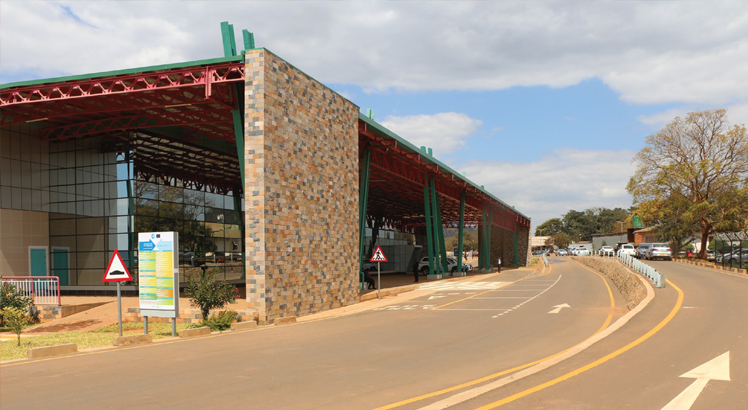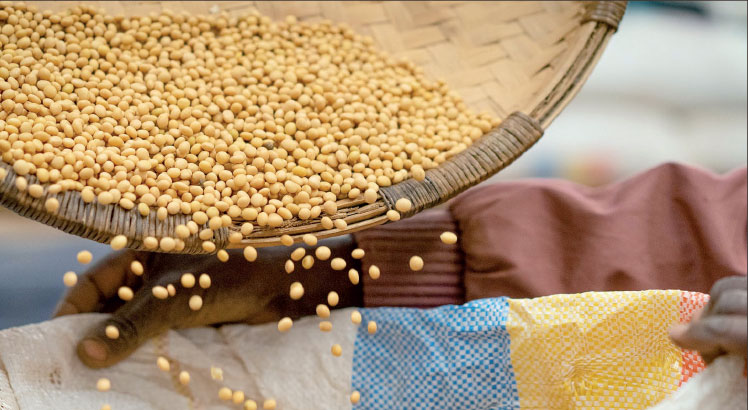2013/14 budget aligned to MGDS II
 Malawi Government says it has aligned the priorities of the 2013/14 budget to the second Malawi Growth and Development Strategy (MGDS II) because it remains its medium-term guiding strategy.
Malawi Government says it has aligned the priorities of the 2013/14 budget to the second Malawi Growth and Development Strategy (MGDS II) because it remains its medium-term guiding strategy.
The strategy aims at helping government on its effort to attain the country’s long-term development agenda and improve the socio-economic wellbeing of Malawians.
The MGDS II has isolated nine key priority areas that sets out government’s agenda for growth and investment to enable the country achieve the United Nations’ eight Millennium Development Goals (MDGs) in the medium term and the vision and aspirations of Malawians as stipulated in the Vision 2020 in the long term.
The nine priority areas are; agriculture and food security, transport infrastructure, energy, industrial development, mining and tourism, education, science and technology, public health, sanitation, malaria and HIV and Aids management.
Others are integrated rural development, green belt irrigation and water development, child development, youth development and empowerment and climate change, natural resources and environmental management.
In the budget presented by Finance Minister Ken Lipenga, according to the 2013/14 Malawi Government financial statement, about 71 percent of the total budget has been earmarked for MGDS II key priority areas.
The financial statement shows that agriculture and food security has been allocated K126.5 billion, which is about 20 percent of the total budget, out of K638.1 billion.
This allocation is an increase from the K87.2 billion, which was 18 percent of the total 2012/13 revised budget.
“This means that in 2013/14 budget estimates, agriculture and food security has been allocated more than the other MGDS key priority areas,” reads part of the statement.
However, of the estimated allocation to the ministry, government plans to spend K60.1 billion to subsidised farm inputs for smallholder farmers under the Farm Input Subsidy Programme (Fisp).
The education, science and technology priority area has been earmarked to receive K110.3 billion, compared to K88.5 billion in the 2012/13 revised budget.
This accounts for 18 percent of the total allocation, clearly indication that the education sector is the second regarding resource allocation.
Public health, sanitation, malaria and HIV and Aids management has been allocated K77.1 billion, representing 12 percent of the total budget.
Other allocations in the priority areas are transport infrastructure and Nsanje World Inland Port which has been allocated K47.2 billion, seven percent of the total budget, up from last year’s K33.6 billion, integrated rural development K42.6 billion, also seven percent of the budget, from last year’s K31.6 billion, energy K10.6 billion, representing two percent of the budget, up from K9.6 billion last year and green belt which is expected to use K14.9 billion, up from the previous year’s K7 billion.
Child development and youth development empowerment and climate change, natural resources and environment management have been allocated K7.6 billion and K8.1 billion respectively, which are all one percent of the total budget, according to the budget figures.
The 2013/14 budget has also been linked to the six thematic areas of the MGDS II. According to the financial statement, 32 percent of the total money allocated to MGDS II activities have been allocated to theme one which his sustainable economic growth.
“The theme comprises activities under agriculture and food security, energy, industrial development, mining and tourism, integrated rural development, climate change, natural resources and environmental management and activities implemented towards developing private sector,” says the statement.
Social development which mainly comprises activities under education, science and technology, public health, sanitation, malaria and HIV and Aids management and child and youth development and empowerment, has been allocated K92.4 billion which is 19 percent of the total budget.
The figures further show that improved governance and infrastructure development have been allocated 14 percent [K67 billion] and 12 percent [K61.5 billion] of the fund respectively.
Gender and capacity development and social protection and disaster management have been allocated one and 0.1 percent respectively
Not only is the 2013/14 budget aligned to MGDS II, but also the Economic Recovery Plan (ERP). The financial statement shows that of the total K8.9 billion total projected allocation, agriculture has been allocated K3 billion which represents 34 percent while transport and tourism sectors have been allocated K2.6 billion and K1.4 billion representing 31 percent and 16 percent respectively.
The ERP draws priorities from the MGDS II and is intended in the long term to achieve goals of the Vision 2020.
The budget has also drawn priorities from ERP which are meant to enhance economic growth, create employment and boost production I the short to medium term.
The ERP focuses on immediate, short term and medium term policy reforms and the 2012/13 budget focused on implementation of the immediate and short term policy reforms that were meant to bring macroeconomic stability and cushion the vulnerable from the impact of policy reforms such as exchange rate adjustment.
In the 2013/14 financial year, the focus will be to align the financial plan to sectors that would enhance economic growth in the medium in sectors such as energy, tourism, mining, agriculture and transport.





